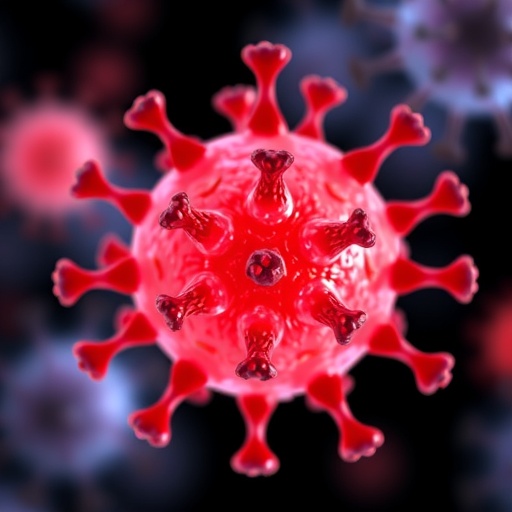More than a decade of research on the mda-7/IL-24 gene has shown that it helps to suppress a majority of cancer types, and now scientists are focusing on how the gene drives this process by influencing microRNAs. Published this week in the journal Proceedings of the National Academy of Sciences, the findings could potentially have implications beyond cancer for a variety of cardiovascular and neurodegenerative diseases caused by the same microRNA-driven processes.
The study was led by Paul B. Fisher, M.Ph., Ph.D., F.N.A.I., Thelma Newmeyer Corman Endowed Chair in Cancer Research and member of the Cancer Molecular Genetics research program at VCU Massey Cancer Center, chairman of the Department of Human and Molecular Genetics at VCU School of Medicine and director of the VCU Institute of Molecular Medicine (VIMM). The mda-7/IL-24 gene was originally discovered by Fisher, and he and his colleagues have since published a number of studies detailing how the gene can suppress cancer by directly influencing two important mediators of cell death known as apoptosis and toxic autophagy. They have also been developing mda-7/IL-24 viral gene therapies, purified protein treatments and T-cell-delivered therapies that take advantage of these processes to selectively kill cancer cells.
“MicroRNAs play decisive roles in a variety of diseases, including cancer. This study shows for the first time how mda-7/IL-24 influences an enzyme critical to microRNA processing, and it provides exciting clues as to how this process could be targeted therapeutically,” says Fisher.
The researchers showed that mda-7/IL-24 reduces the expression of an enzyme called DICER, and this effect occurs only in cancer cells. DICER works to process microRNAs for specific cellular functions. In experiments involving prostate, breast and brain cancer cell lines and mouse models, overexpression of DICER was shown to rescue cancer cells from mda-7/IL-24-mediated cell death.
Microphthalmia-associated transcription factor (MITF) was found to be a key mediator in this process. MITF regulates cellular responses to reactive oxygen species (ROS), a natural byproduct of the normal metabolism of oxygen and an important component in cell signaling. In times of cellular stress, ROS levels can increase dramatically and contribute to the development of disease. The scientists showed for the first time that mda-7/IL-24 down-regulates MITF, which, in turn, down-regulates DICER, the target of MITF.
Previous experiments showed a potent bystander effect where mda-7/IL-24 not only killed cancer cells at the primary tumor site but also in distant secondary tumors not directly targeted by the therapy. The bystander effect is mediated, at least in part, by the potent immune activating and anti-growth properties of mda-7/IL-24. These findings help explain why this bystander effect occurs.
“This is an exciting and previously unknown link between mda-7/IL-24 and ROS/MITF/DICER that we plan to continue exploring,” says Fisher. “This research may open up new therapeutic targets, and monitoring the levels of these components could provide important biomarkers to help inform the effectiveness of mda-7/IL-24-based therapies.”
###
The present studies involve a close collaboration with Webster K. Cavenee, Ph.D., university professor at Ludwig Institute for Cancer Research, University of California San Diego. Fisher also collaborated on this research with Devanand Sarkar, M.B.B.S., Ph.D., associate director for education and training, Harrison Foundation Distinguished Professorship in Cancer Research and member of the Cancer Molecular Genetics research program at VCU Massey Cancer Center, professor in the Department of Human and Molecular Genetics at the VCU School of Medicine and associate scientific director of cancer therapeutics at VIMM; Swadesh K. Das, Ph.D., member of the Cancer Molecular Genetics research program at Massey, VIMM member and assistant professor in the VCU Department of Human and Molecular Genetics; Luni Emdad, M.B.B.S., Ph.D., member of the Massey Cancer Molecular Genetics research program, VIMM member and assistant professor in the VCU Department of Human and Molecular Genetics; Anjan K. Pradhan, Ph.D., lead postdoctoral investigator, Praveen Bhoopathi, Ph.D., and Sarmistha Talukdar, Ph.D., all postdoctoral research scientists in the Department of Human and Molecular Genetics; and Danielle Scheunemann, M.S. student in the Department of Human and Molecular Genetics.
This study was supported in part by VCU Massey Cancer Center’s National Cancer Institute Cancer Center Support Grant P30 CA016059, the National Foundation for Cancer Research, the VCU Institute of Molecular Medicine and the Genetics Enhancement Fund. Support was also provided by a Sponsored Research Agreement from InterLeukin Combinatorial Therapies to Emdad.
Media Contact
John Wallace
[email protected]




